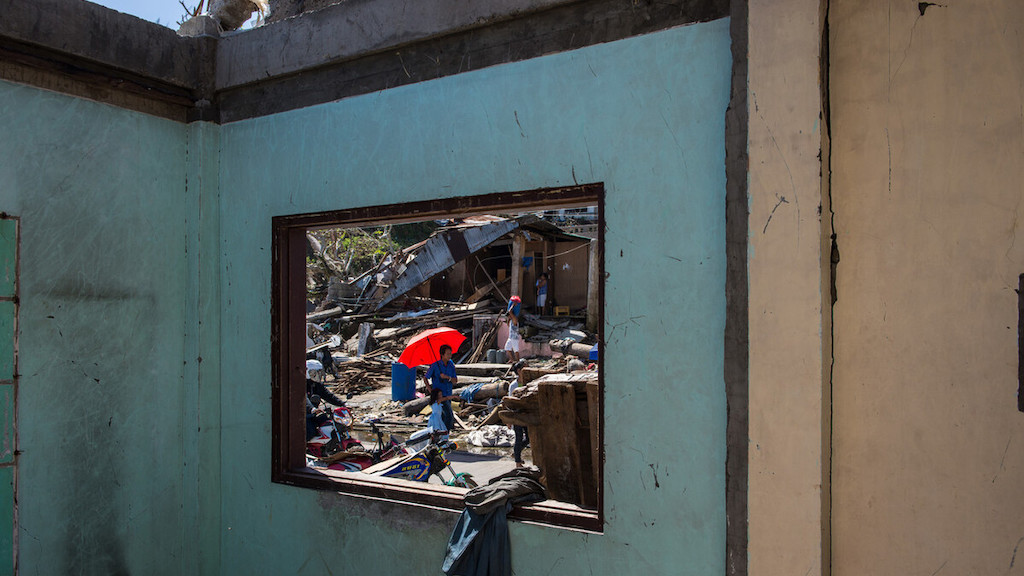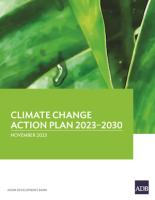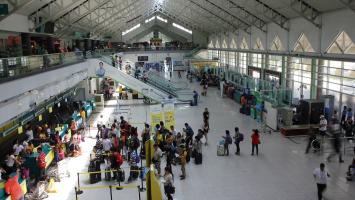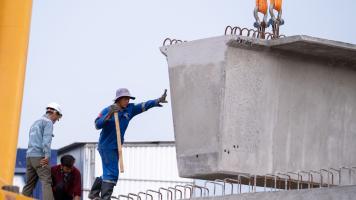Five Ways to Fund the Philippines’ Fight against Climate Change

Energy Specialist, Southeast Asia Department, Asian Development Bank (ADB)

Infrastructure Specialist (Innovation and Green Finance), Southeast Asia Department, Asian Development Bank (ADB)

The Philippines has been one of the hardest hit countries by climate change and needs substantial financing to address the issue. Photo credit: ADB.
Financing climate action was a key topic at COP27. For the Philippines, on the front lines of the global climate crisis, it is a make-or-break question.
Living in one of the world’s most vulnerable countries to climate change, people in the Philippines face an increasing barrage of cyclones, floods, drought, and heatwaves. The country is hit with an average of 20 typhoons per year, and over 3 million people are affected by extreme floods. Not surprisingly, addressing climate change is a consistent priority across the country’s leadership, whether in government or management of large companies.
In 2021, the Philippines committed to reduce 75% of its emissions by 2030 and quickly scale up efforts to adapt to a changing climate, setting itself one of the most ambitious targets among Southeast Asian countries. But with only 2.7% of the 75% target to be financed through the public budget, turning ambition into delivery will depend on how the country’s climate program is financed.
Who will pay for recovery from the ever-worsening impacts of storms and drought? What role do banks play? What financing channels are needed? These are key questions for the government as they tackle the roll-out of their 2021 climate pledge.
There is, however, good news. Globally, private investors are looking to invest green funds in emerging markets. Closer to home, the Philippines’ first sovereign sustainability bond issuance raised $1 billion for green projects in 2022. Climate funds—such as the regional ASEAN Catalytic Green Finance Facility and the national Peoples’ Survival Fund—offer financing and technical advice to help design projects.
We need action on five fronts to unlock the financing needed.
1. Increase government budget allocations for climate. Effective government budgeting is key to building institutions, as well as the teams of people needed to convert climate ambition into action. The national Climate Change Expenditure Tagging system supports government agencies to better budget and track what they are spending for climate activities. Maintaining and increasing budget allocations—from the 6.27% of the annual budget allocated for climate resilience in 2021—will be critical.
2. Mobilize international climate finance. The Philippines’ climate ambitions will not be met without support from development partners and philanthropies. In 2018–2020, donor governments and multilateral institutions provided $2.4 billion in climate-related development finance. More of these funds are needed, and fast. A pipeline of projects needs to be built, and project sponsors need more capacity to mobilize funds, design projects, and engage investors.
3. Green the financial sector. Banks will be key to financing the lion’s share of climate initiatives in the Philippines. The central bank, Bangko Sentral ng Pilipinas, and other financial regulators have put in place a suite of policies to integrate environmental, social and governance issues into banking practice; encourage green lending; and support banks considering how climate risks affect their lending. Banks and financial institutions need greater capacity to take on this agenda.
4. Attract private investors. With prices of renewable energy going down rapidly, private investors are looking to finance clean energy projects. Investment in geothermal, solar, and wind projects can be unlocked by updating regulations and putting in place the right incentives to help address investment risks. At the same time, innovative solutions are needed. The Energy Transition Mechanism, for example, is piloting an approach to mobilize funds to help retire coal power plants early and provide for affected communities.
5. Mobilize local governments. Local governments—as future leaders of climate security for most Filipinos—are key to building pipelines of low-carbon and climate-resilient projects. National platforms like the Peoples’ Survival Fund can help channel funds to projects, but local governments need awareness, know-how, and capacity to roll out local climate change programs.
There is a clear message coming out of the United Nations COP27 Climate Change Conference in Sharm El-Sheikh: the world has until 2030 to take the necessary action to limit global warming else it will be too late. The clock is ticking for the Philippines, and the money needed for climate action cannot be mobilized fast enough.
This blog post was first published by the Asian Development Blog on 13 December 2022.

Diana Connett
Energy Specialist, Southeast Asia Department, Asian Development Bank (ADB)Diana Connett is the Asian Development Bank's (ADB) focal for energy operations in the Philippines. She co-led ADB’s first climate change policy-based loan for the Philippines and ADB’s first gender-mainstreamed energy sector results-based lending program. She has worked in energy and climate change across Southeast Asia for the past 7 years. Previously, she worked in corporate and operational management in a private sector energy company with international operations, as well as in civil society organizations and international institutions.

Naeeda Crishna Morgado
Infrastructure Specialist (Innovation and Green Finance), Southeast Asia Department, Asian Development Bank (ADB)Naeeda Crishna Morgado specializes in green investment and climate policy in developing Asia, based in Beijing. Working as an independent expert since 2018, she supports the Southeast Asia Department’s work on designing innovative finance instruments and manages strategy and partnerships for the ASEAN Catalytic Green Finance Facility (ACGF).


